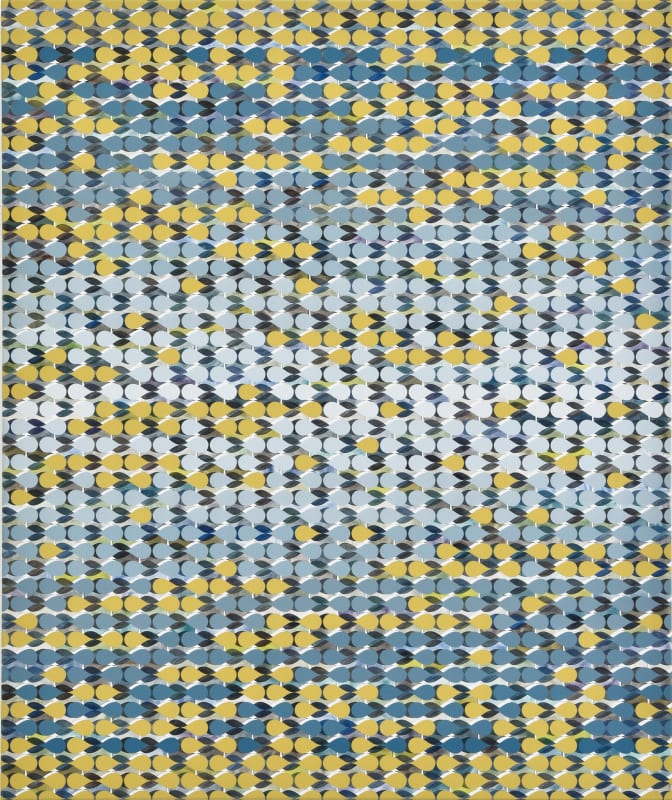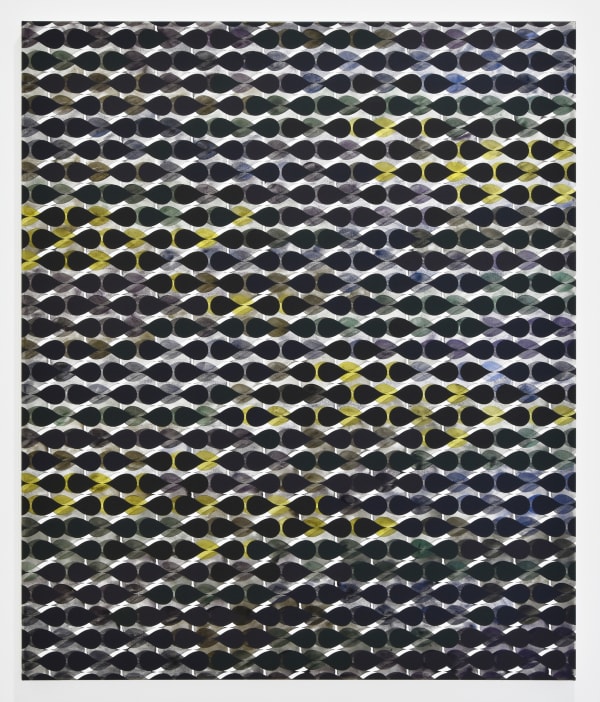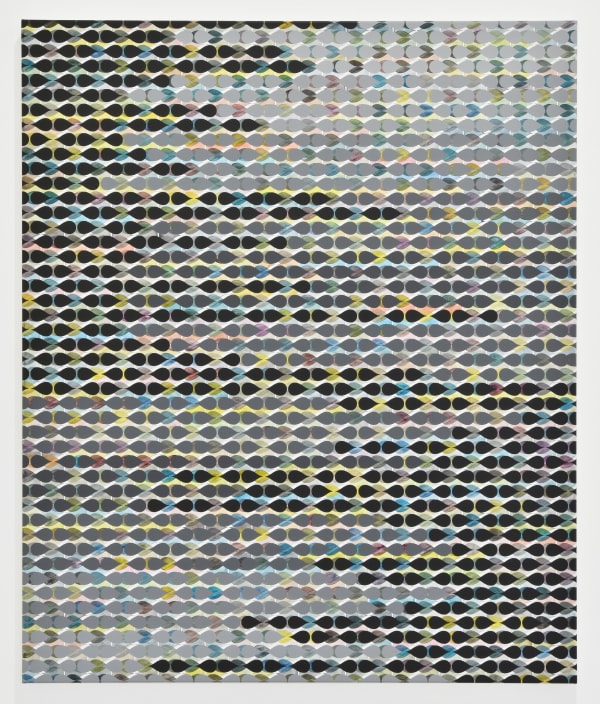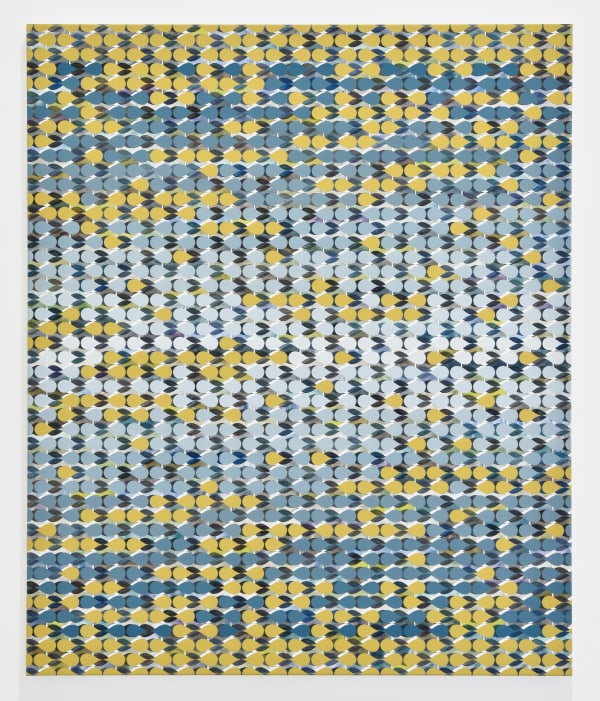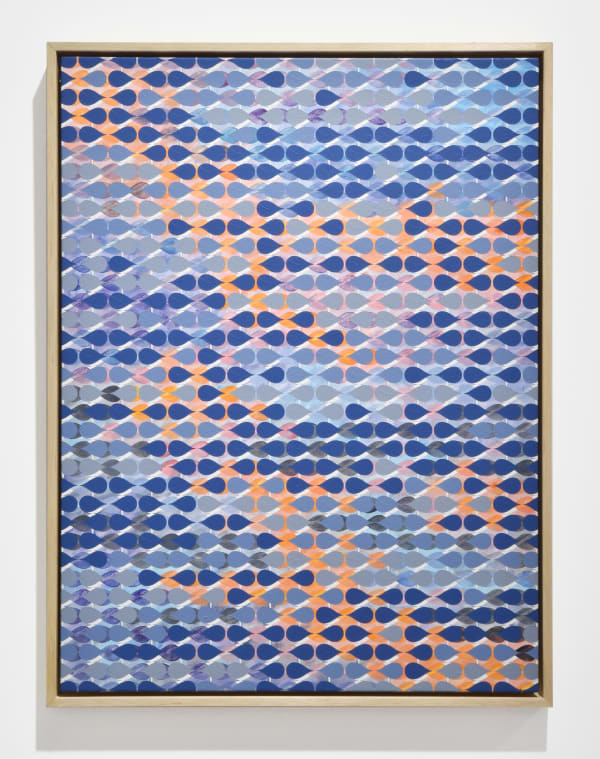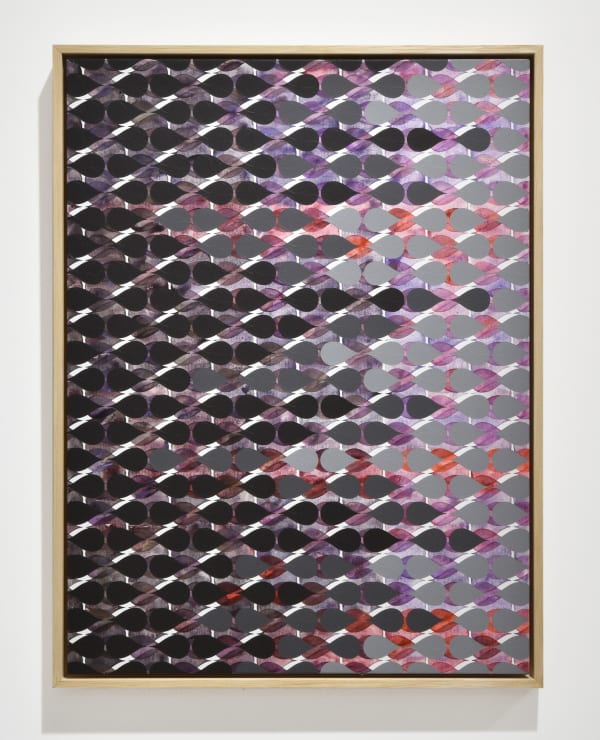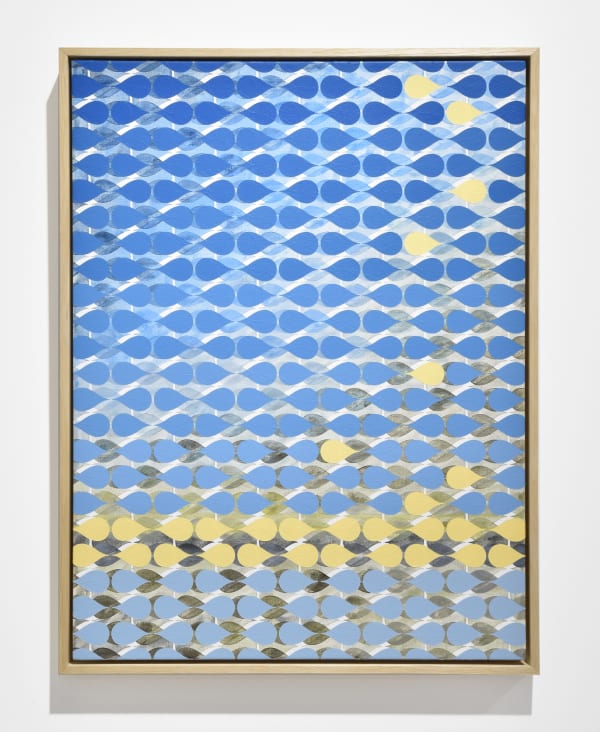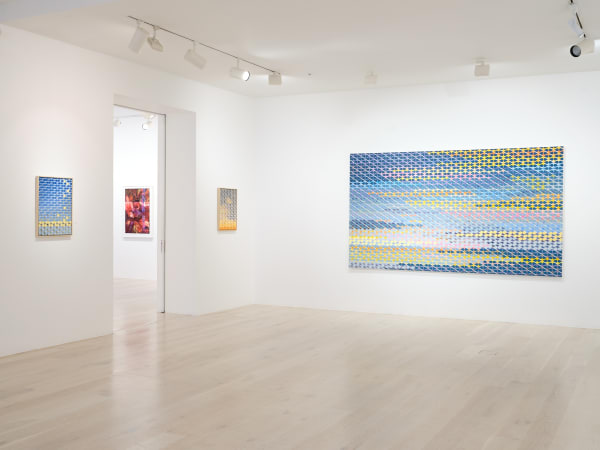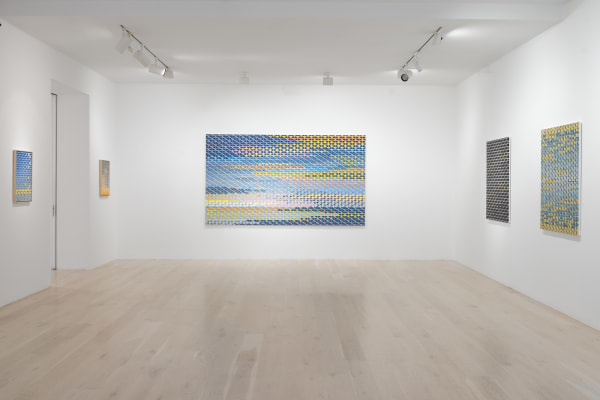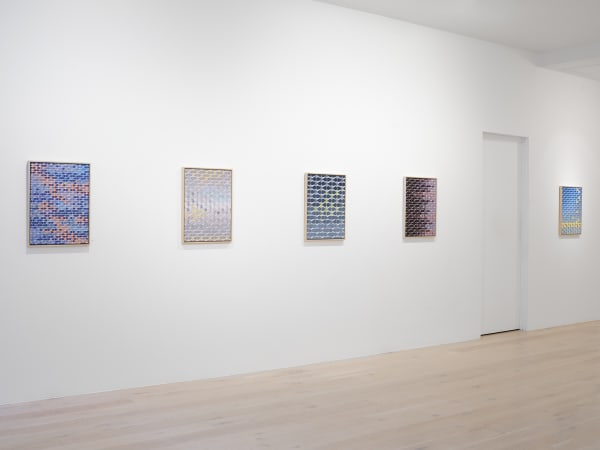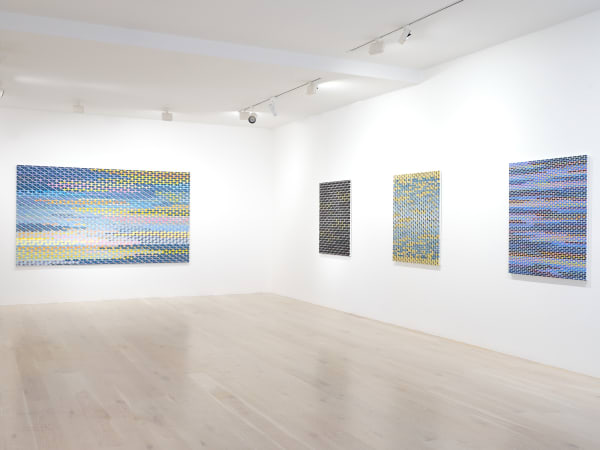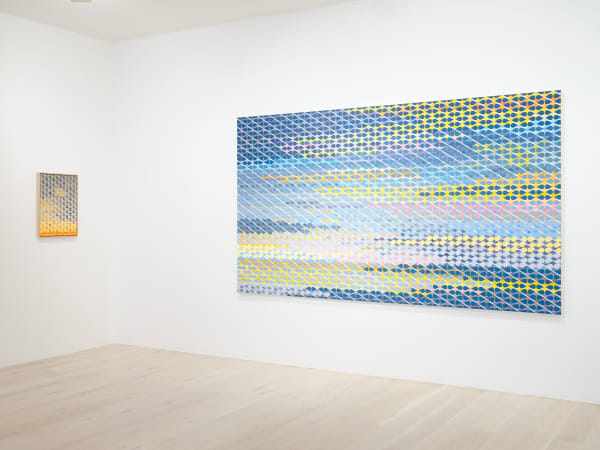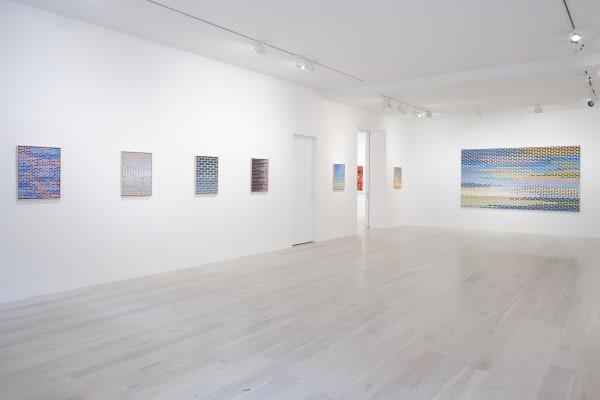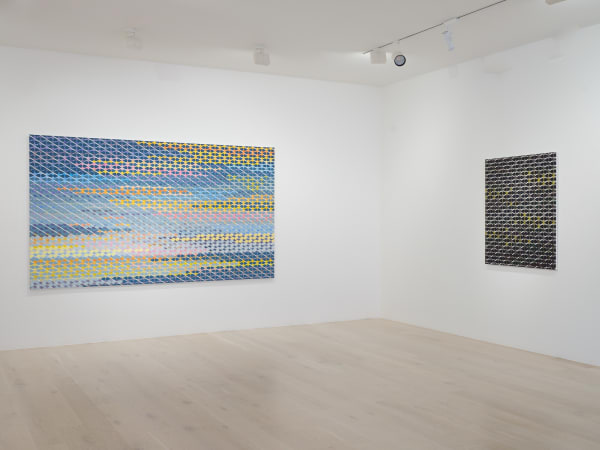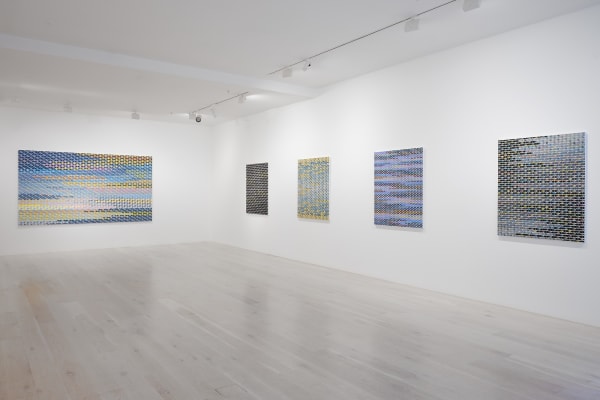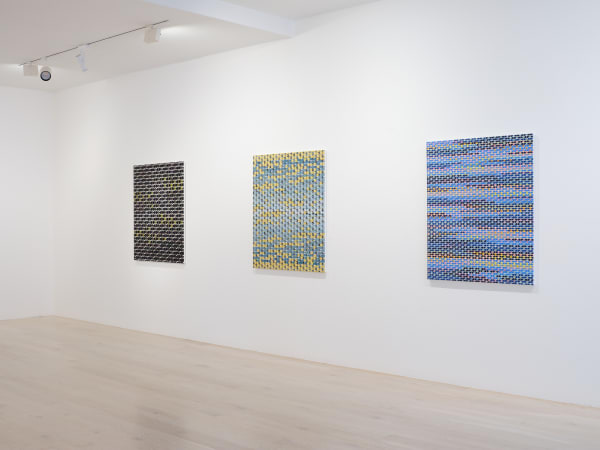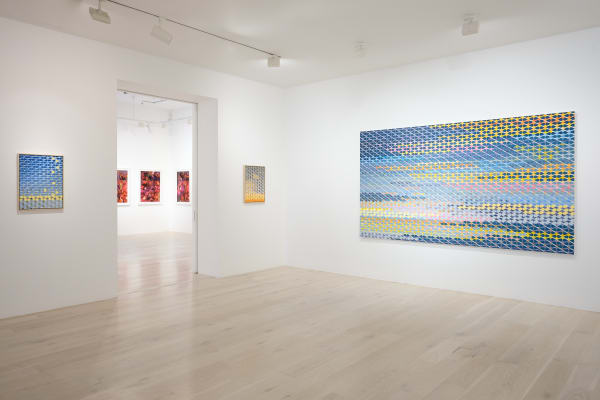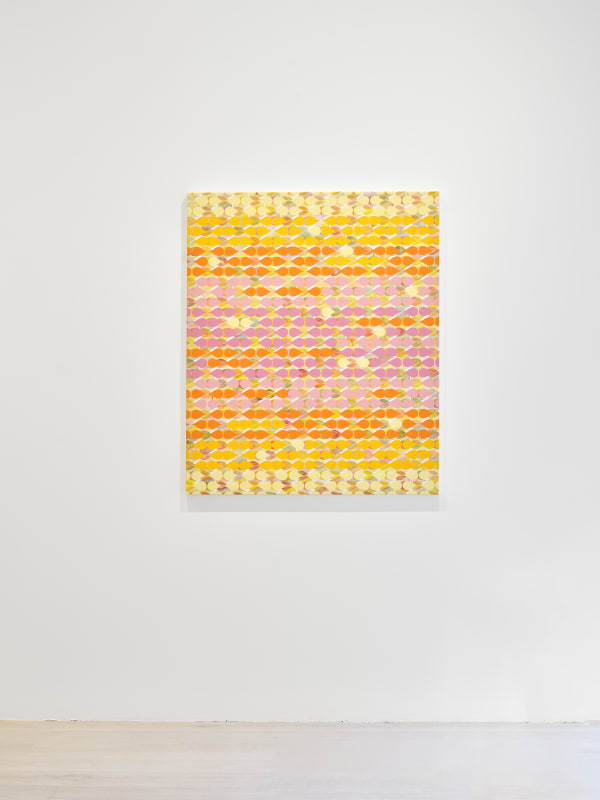Today: Sara Hughes
In recent years, Sara Hughes has made time a central aspect of her abstract painting practice. Through her works, she examines very specific moments in time, paying close attention to the effect of light on colours in a given environment. This has comprised the subject matter of her two previous Gow Langsford exhibitions, 8 Minutes and 17 Seconds in 2019 and Timestamp in 2021. With the paintings presented in Today, she further develops this theme.
Hughes’ system of titling references dates and times – right down to the second. She states, “The titles always have a specific date, time, hour, second. It’s a reference to where I was at that particular time. When I’m outside, I observe the interactions between natural light and the sky, the land, and the sea – the way that light effects or creates colour. My recollection of that later in the studio is what I develop into paintings. It’s an exploration of how colour operates through memory.” This stems, she states, from a desire to delve into the ‘colour information’ of memory.
-
 Sara Hughes, Millisecond 25-1-2023, 5:44:21.003 pm, 2023
Sara Hughes, Millisecond 25-1-2023, 5:44:21.003 pm, 2023 -
 Sara Hughes, Millisecond 26-6-2023, 8:16:09.257 am, 2023
Sara Hughes, Millisecond 26-6-2023, 8:16:09.257 am, 2023 -
 Sara Hughes, Millisecond 15-1-2023, 10:21:33.902 pm, 2023
Sara Hughes, Millisecond 15-1-2023, 10:21:33.902 pm, 2023 -
 Sara Hughes, Microsecond 31-1-2023, 8:45:12.691.138 am, 2023
Sara Hughes, Microsecond 31-1-2023, 8:45:12.691.138 am, 2023 -
 Sara Hughes, Nanosecond 27-7-2023, 4:08:17.032.941.652 pm, 2023
Sara Hughes, Nanosecond 27-7-2023, 4:08:17.032.941.652 pm, 2023 -
 Sara Hughes, Microsecond 31-5-2023, 12:25.34.128.439 pm, 2023
Sara Hughes, Microsecond 31-5-2023, 12:25.34.128.439 pm, 2023 -
 Sara Hughes, Microsecond, 24-5-2023, 7:49:22.341.219 am, 2023
Sara Hughes, Microsecond, 24-5-2023, 7:49:22.341.219 am, 2023 -
 Sara Hughes, Nanosecond, 12-5-2023, 5:20:31.839.216.351 pm, 2023
Sara Hughes, Nanosecond, 12-5-2023, 5:20:31.839.216.351 pm, 2023 -
 Sara Hughes, Microsecond, 6-6-2023, 6:01:43.544.723 pm, 2023
Sara Hughes, Microsecond, 6-6-2023, 6:01:43.544.723 pm, 2023 -
 Sara Hughes, Microsecond, 14-6-2023, 12:09:43.216.173 pm, 2023
Sara Hughes, Microsecond, 14-6-2023, 12:09:43.216.173 pm, 2023 -
 Sara Hughes, Microsecond, 11-2-2023, 8:15:03.107.233 pm, 2023
Sara Hughes, Microsecond, 11-2-2023, 8:15:03.107.233 pm, 2023 -
 Sara Hughes, Millisecond, 28-3-2023, 8:55:54.201 am, 2023
Sara Hughes, Millisecond, 28-3-2023, 8:55:54.201 am, 2023 -
 Sara Hughes, Millisecond 3-11-2022, 8:25:04.541 pm, 2023
Sara Hughes, Millisecond 3-11-2022, 8:25:04.541 pm, 2023
“Painting marks time, rather than intervening in the events that populate it.” [1] - David Joselit
In recent years, Sara Hughes has made time a central aspect of her abstract painting practice. Through her works, she examines very specific moments in time, paying close attention to the effect of light on colours in a given environment. This has comprised the subject matter of her two previous Gow Langsford exhibitions, 8 Minutes and 17 Seconds in 2019 and Timestamp in 2021. With the paintings presented in Today, she further develops this theme.
Hughes’ system of titling references dates and times – right down to the second. She states, “The titles always have a specific date, time, hour, second. It’s a reference to where I was at that particular time. When I’m outside, I observe the interactions between natural light and the sky, the land, and the sea – the way that light effects or creates colour. My recollection of that later in the studio is what I develop into paintings. It’s an exploration of how colour operates through memory.” This stems, she states, from a desire to delve into the ‘colour information’ of memory.
With these works, Hughes has engaged in a deep exploration of colour, tonality, and hue. “There is a reference embedded in these paintings to a series of works I made in the early 2000s titled Millions of Colours, which explored computer colour spectrums and the possibility of computer monitors being able to display more than 16 million colours. These new works examine colour from a particular location – not the digital realm. I’m interested in the spectrum of colour that runs through the day. Not just one day, but every day.”
The process behind these works relies on a complex information gathering stage. Hughes states, “I always collect a lot of preparatory information before I start a series of paintings. In these new works I make notes, record my thoughts on my phone and take photos while I’m outside. I come back to the studio and create small paper works and colour studies based on these recollections. I’m engaging with the infinite number of colours found in the natural world.” While this is clearly not plein air painting, it engages in a similar process – the artist engaging directly with an environment to optimise their sensory experience and translate that into painting.
To an extent, this research process registers in the work. “Recent paintings have held a level of reference to landscape or sky. In these new works, that’s less apparent. While there are still some subtle references to horizon lines, these paintings could be read as entirely abstract. With these works, I wanted to focus more purely on colour. I heard my boys debating in the back of the car whether grey is a colour or a shade. It made me think, ‘What is grey?’ It’s a good question, and one that opened up a line of enquiry for me into all of the different pigments that can go into it. Greys can be seen in every environmental colour spectrum – whether it’s really bright tones in light bouncing off clouds or subtle bluish reflections on the horizon. I have been interested in translating those subtle hues, both warm and cold greys, into painting.”
The works in Today all feature the use of a droplet motif. The simple form is repeated many times in overlapping layers, building up a grid-like pattern. Underlying layers are comprised of thin translucent washes, whereas the top layer is thick and opaque. Colours shift and contrast between layers, with areas of overlap bringing out different tones and subtle colour interactions. The effect is mesmerising. Colours shift as one draws nearer or further away from the work.
“The droplet shape is open-ended, though it definitely relates to water and the atmosphere.” Hughes says. “On one level the droplet is purely abstract, yet when you are looking at it you can’t help but read it as a droplet. Through repetition of this simple element, I’m creating complex structures in these paintings. I’m interested in this flicker of meaning that underpins the matrix of colour information in the paintings. It’s an ongoing interest, how to embed my paintings with the information I collect without illustrating it.”
Hughes sometimes uses a computer to assist in developing layouts for her paintings, though they are never fully plotted out. To her, an intrinsic part of the painting process is engaging tangibly with the colours and material of paint. In this, painting remains exploratory. Her studio is scattered with paint swatches and studies, there is a place for testing things out and resolving challenges though process – not simply designing an image and illustrating it in paint. The difference of such an approach could be considered subtle, though the increased depth and nuance it brings to the works in Today is richly apparent.
[1] David Joselit, “Marking, Scoring, Storing and Speculating (on Time)”, in Painting Beyond Itself, Edited by Isabella Graw and Ewa Lajer-Burcharth (Berlin: Sternberg Press, 2016) Pp 11-20. 11.
